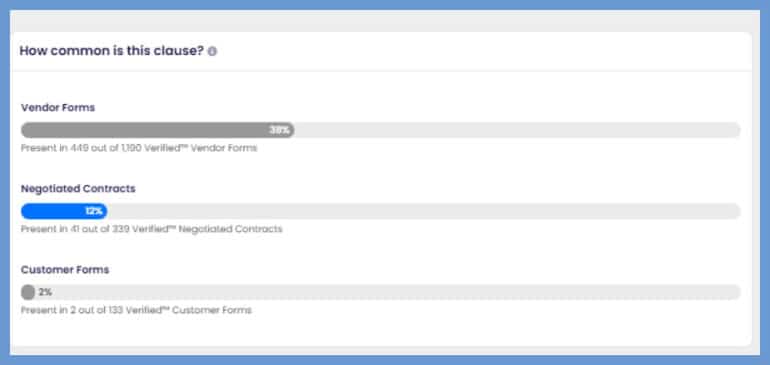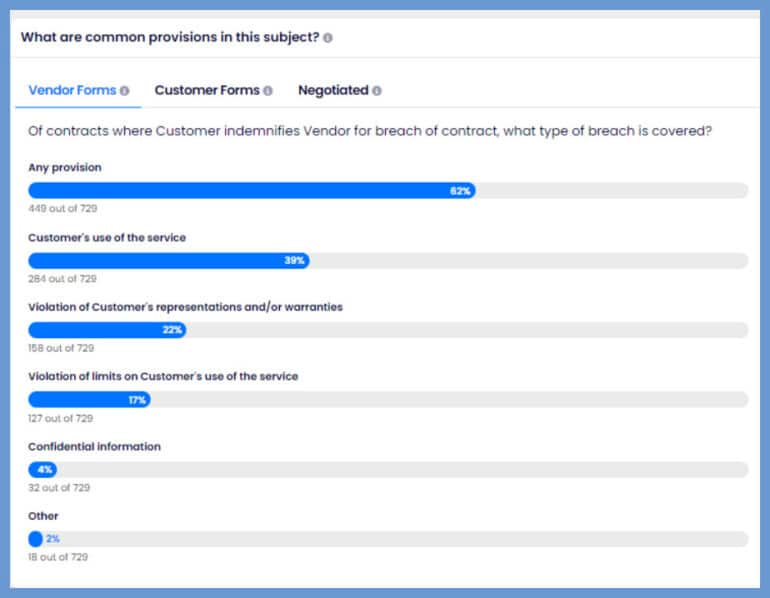When will data-informed discussions replace the ritual of negotiation performance art? Despite progress in AI and contract negotiations, the dance continues.

Table of contents
Contract negotiation, like most areas in the practice of law, has matured greatly in recent decades thanks to modern tools, technology and process improvements. Few attorneys miss the days of seemingly endless, inefficient back and forth on any number of terms and conditions even for small contracts, let alone daylong sessions with large teams sitting around a conference table with hard copies, legal pads and sugary sodas trying to hammer out more complex agreements.
Today, contract negotiation is handled with much greater efficiency. Redlining has replaced Post-its and handwritten notes in the margins of hard copies. Most negotiations are handled via conference calls and only after several email exchanges to narrow the issues. If the parties do meet in person, it is with a limited number of people to keep costs down and with outside counsel involved only on highly sensitive legal issues.
Advances in AI Advance Contract Negotiations
More important, lawyers now have extensive information at their fingertips that not only dictates many standard contract terms but also informs their positions on what is negotiable. Theoretically, having all this data so easily accessible should also expedite and simplify the process of negotiating contracts to favorable outcomes for all parties. Yet contract teams continue to see the same old speeches, anecdotes and faux indignation when it comes to working through legal risk clauses.
What Is Preventing More Progress?
We’d expect all those long-winded speeches and oddly worded compromise paragraphs would be replaced by a more modern approach — most notably artificial intelligence tools that can provide a fairer, more balanced contract based on the deal parameters, with wording that is crisp and clear.
Countless global associations, AI companies, legal service providers and others have collected and analyzed thousands of contracts to better leverage the data those contracts contain. They have shared what’s industry standard for different agreement types in different industries, spend categories, regions, dollar amounts, time periods and numerous other criteria. They can determine what a balanced contract should look like, clause by clause, for the deal at hand, as well as how far one party’s contract and each clause deviate from that norm. They may also provide benchmark data on specific clauses and companies.
A Data-Infused Contract Negotiations Strategy
Data analytics, for example, can be used to gauge the likelihood of a seller getting a buyer to indemnify the seller for certain actions or inactions. In the example below, this seller seeks a very broad customer indemnity. According to the data, this broad indemnity is present in similar seller templates only 38% of the time, and it appears in only 12% of the final, negotiated contracts of this type. Further, buyers include this clause in their templates only 2% of the time.

Contract teams can also look within a clause to see which elements are most often agreed to. Per the data below, requiring a buyer to indemnify the seller for a breach of its use of the service is found 39% of the time. Indemnification for breach of warranties and representations is found 22% of the time. And indemnification for breach of confidentiality is found 4% of the time.
This is based on an analysis of 729 similar contracts.

But despite the availability of compelling, easily accessed aggregated information like the examples above, the negotiation dance continues among attorneys and contract negotiators.
How Data Deniers Influence Contract Negotiations
Part of the reason rests with the legal profession itself, which continues to be generally slow at adopting new tools and methods. And lawyers are often skeptical, clinging to a belief that each situation is unique, thus perpetuating an “it depends” mindset.
Also, lawyers who do use AI or other analytics to leverage data in their contract negotiations often encounter opposing counsel who refuse to accept the validity of the information when it doesn’t support their beliefs.
Unfortunately, it will take time for these models to be universally accepted and applied and those data deniers to be discredited or marginalized.
Data vs. Leverage
That’s not to say attorneys can’t negotiate even when the data isn’t on their side. Leverage is a powerful force, enabling a party to demand its preferred terms even when the data may not support that position.
But companies with leverage are under greater scrutiny today, particularly because data is playing a bigger role in proving monopoly behavior. A confidentiality agreement, for example, may not be the place to argue that the customer’s actions are clearly monopolistic. However, when the commercial agreement is negotiated and the data shows this customer bullied its way to agreement terms that were heavily in its favor, that’s some evidence that may interest the FTC and DOJ.
Show Me the Data!
The acceptance and use of data and AI can’t come soon enough for many lawyers who recognize the contract negotiation dance could be truncated with a simple, “Let’s check the data and see what the standard is.” It may not happen today, but we are in the winter of the “it depends” paradigm. Soon the limitation of liability limbo, the indemnification dipsy-doo and the term and termination tango will be nostalgic reflections of an outmoded contracting model.
















